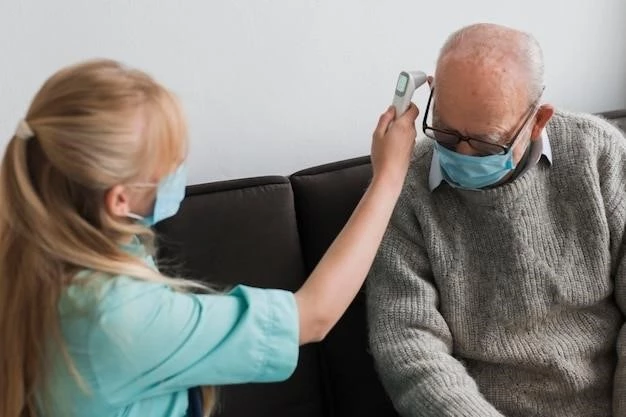Comprehensive Plan on Understanding and Managing Bells Palsy
It’s crucial to understand the causes of Bells Palsy for effective management. Stay informed for better care and recovery.
Causes of Bells Palsy
Understanding the causes of Bells Palsy is key to managing the condition. Factors like viral infections, inflammation of the facial nerve, and even genetics can contribute to its onset. It’s essential to consult a healthcare professional for a thorough assessment and proper diagnosis to determine the specific cause in each individual case. By pinpointing the underlying cause, the treatment approach can be tailored accordingly, leading to a more effective management strategy and potentially better outcomes. Stay informed about the potential causes and work closely with your healthcare provider to address them.
Symptoms and Signs of Bells Palsy
Recognizing the signs and symptoms of Bells Palsy is crucial for early intervention. Common indicators include sudden weakness or paralysis of facial muscles, drooping of one side of the face, difficulty in closing one eye or smiling, drooling, loss of taste, ear pain, and heightened sensitivity to sound. If you experience any of these symptoms, seek medical attention promptly. Understanding these warning signs can lead to a timely diagnosis and appropriate treatment, improving the chances of a successful recovery. Stay vigilant and proactive in monitoring your facial health to address any changes promptly.
Treatment Options for Bells Palsy
When it comes to treating Bells Palsy, various options are available depending on the severity and individual circumstances. Treatment may include corticosteroids to reduce inflammation, antiviral medications if a viral cause is suspected, physical therapy to strengthen facial muscles, eye care to prevent complications like dryness, and in some cases, surgery for specific issues. Discuss with your healthcare provider to determine the most suitable treatment plan for you. It’s essential to follow the recommended treatment diligently and attend regular follow-ups to monitor progress. By actively engaging in your treatment, you can enhance your chances of recovery and minimize long-term effects.

Recovery and Prognosis of Bells Palsy
Understanding the recovery process and prognosis of Bells Palsy is essential for managing expectations. While most cases improve within a few weeks to months, some individuals may experience lingering effects. Factors like age, severity of symptoms, and timely treatment influence the recovery timeline. It’s important to stay patient and positive during the recovery phase, follow your healthcare provider’s recommendations, attend follow-up appointments, and engage in facial exercises to aid in muscle retraining. By addressing recovery proactively and staying committed to your treatment plan, you can maximize your chances of a successful outcome and improved quality of life.
Facial Exercises for Bells Palsy Patients
Facial exercises can play a beneficial role in improving muscle strength and mobility for individuals with Bells Palsy. These exercises help prevent muscle stiffening, enhance facial symmetry, and promote nerve regeneration. Examples include gentle massages, eyebrow raises, cheek puffing, and lip pursing. Consistency and patience are key when incorporating facial exercises into your daily routine. Consult with a healthcare provider or physical therapist to learn the most suitable exercises for your condition. By regularly practicing facial exercises, you can contribute to your recovery process and regain facial function more effectively.
Natural Remedies for Bells Palsy
Exploring natural remedies alongside conventional treatments may offer additional support for Bells Palsy. Options like acupuncture, relaxation techniques, and dietary modifications with anti-inflammatory foods can be beneficial. Herbal supplements such as turmeric or ginseng may also aid in reducing inflammation and promoting nerve health. However, it’s crucial to consult with a healthcare provider before trying any natural remedies to ensure they complement your treatment plan. While natural remedies may provide symptom relief, they should not replace professional medical advice or prescribed treatments. Incorporate natural remedies mindfully as part of a holistic approach to managing Bells Palsy.
Bells Palsy in Children⁚ What You Need to Know
While Bells Palsy is uncommon in children, it can still occur and requires special attention. Recognizing symptoms such as facial drooping, difficulty closing one eye, or changes in taste is crucial. Prompt evaluation by a pediatrician or specialist is recommended for accurate diagnosis and tailored treatment. Children with Bells Palsy may need support in proper eye care, nutrition, and emotional well-being during their recovery. Regular follow-ups are essential to monitor progress and address any concerns. By staying informed and involved in your child’s care, you can help them navigate through Bells Palsy with the best possible outcomes.
Preventing Recurrence of Bells Palsy
Preventing the recurrence of Bells Palsy requires proactive steps and ongoing care. Adopt a healthy lifestyle, manage stress levels, and prioritize adequate rest to support your immune system. Avoid triggers that may lead to viral infections, such as close contact with individuals who are sick. Stay consistent with any prescribed medications or therapies post-recovery. Regular check-ups with your healthcare provider can help monitor your facial health and address any concerns promptly. By maintaining overall well-being and following preventive measures, you can reduce the risk of Bells Palsy recurrence and promote long-term facial nerve health.
